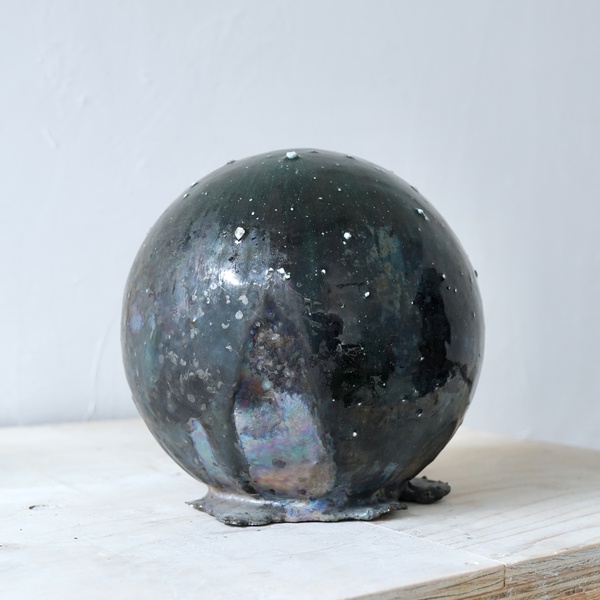sculpture #11
Tomonari Hashimoto (b. 1990) belongs to a new generation of ceramic artists who are challenging the world by their incredible new techniques. His unique multi–layered works are strict and complicated at the same time. Experiments with material, form and aesthetics already brought him the fame of one of the most promising masters of our time. He was a finalist for the LOEWE Craft Prize in 2019. The jury was truly struck by the technique that made ceramics look like a mix of oxidized and rusty metal.
The rough structure of these sculptures, reminiscent of buckwheat peels, is obtained in the process of multi–layer firing. It is based on several traditional Japanese methods of working with clay: the “tsuchi” effect and the “seto yaki” type of ceramics. But buckwheat peels are really poured into the kiln, which the artist creates anew for each object each time.
“My work is built through accumulation of clay and never carved away. It is fired with a glaze saturated with metal oxides, then again fired and carbonized to bring out the character of the metals onto the surface. I have to build a kiln specific to each of my work every time I fire to carbonize them,” explains the ceramist.
All the pieces are strictly made by hand, even though their perfection and precision of contours seem to be achieved with the help of machines. The sizes of objects can vary from 30 cm to two meters in height and the process of their creation is complicated and time–consuming, as it can take up to 8 hours to produce one part.
 23
23
23
23


Submit an application
We will inform you about the availability of the product by phone after checking


